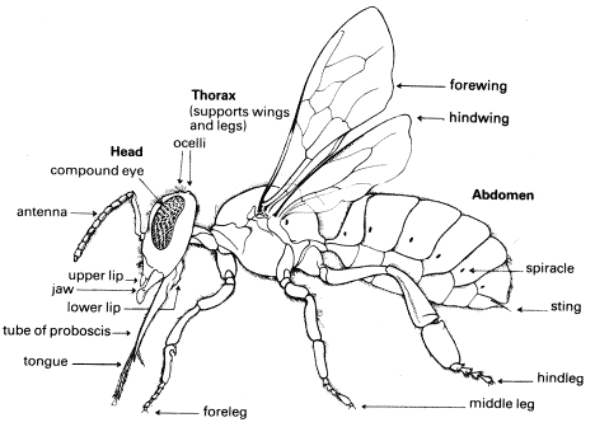|
We Do Bees: The Anatomy of the Bee
|
|
|
|
|
|
General Anatomy of the Bee: The Bee is a typical insect divided into three clear sections, the head Thorax and Abdomen. Head: On the head there is a pair of Atenna and two compund eyes and three simple eyes. The bees strong mandible helps them shape wax, eat pollen and fight. Proboscis: It extend from the mouth and acts as a straw for the bee. They are able to move it around and also use it for sucking up nectar and water. Thorax: This is the section of the bee where the six legs extend from and the wings also extend upward from. Abdomen: On the honey bee the stinger is located at the end of the Abdomen. The outer coating of the Thorax and abdomen have an exoskeleton to protect the bee abd is made of chitin. Antennae: Are used by the bee to find more information about their surroundings. They are coated with small hairs that relays the information. They are attached to the bees brain by a neve to tranfer the information. Legs: Bees have six legs that are used to support the bee while they are walking. There is also small hairs that the pollen sticks to so the bee transports the pollen back to the hive. There is a structure on the back leg used to remove pollen that sticks to the hair on the bee. Stinger: The stinger is at the end of the abdomen it is a hollow shaft that connect to a sac of venom. After plunging the barbed stinger into the victim the stinger pumps venom for up to 60 seconds. Wings: The bee has two pairs of wings the front and the hind wings. They are attached to each other with small hooks. The wings are supported by veins that eun through the wings. The bee can beat their wings 400 to 450 beats per minute on average.
|

